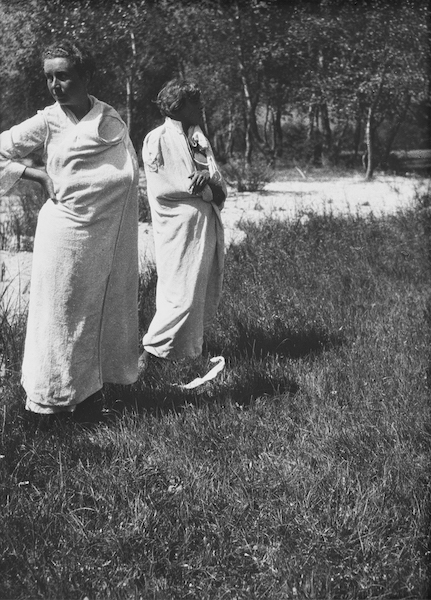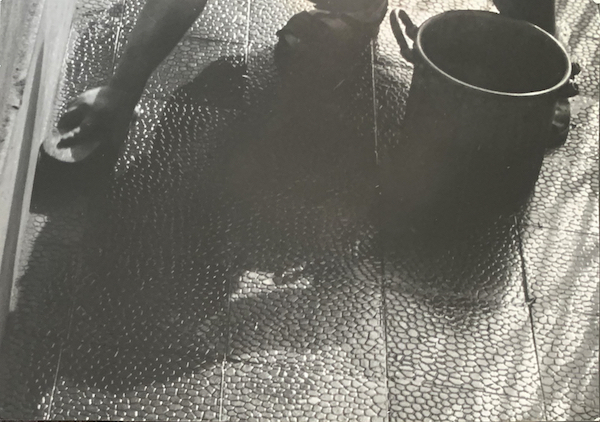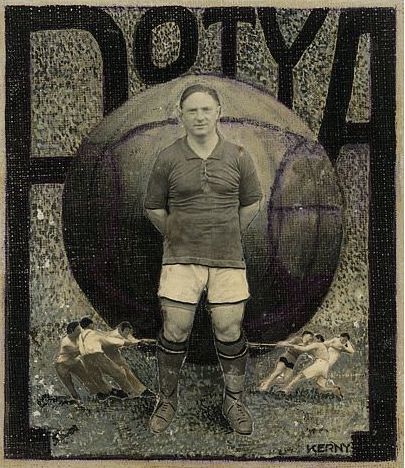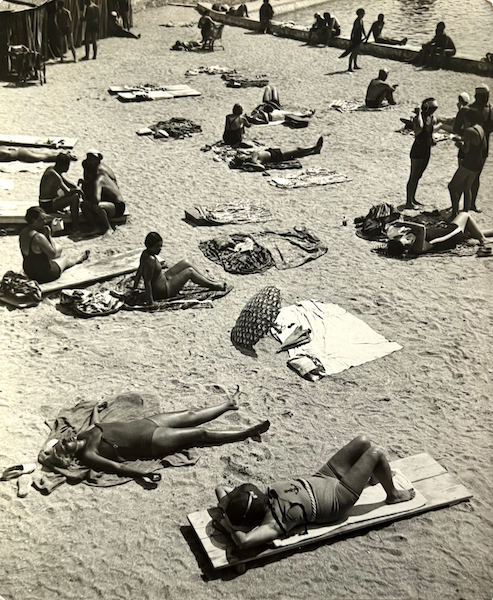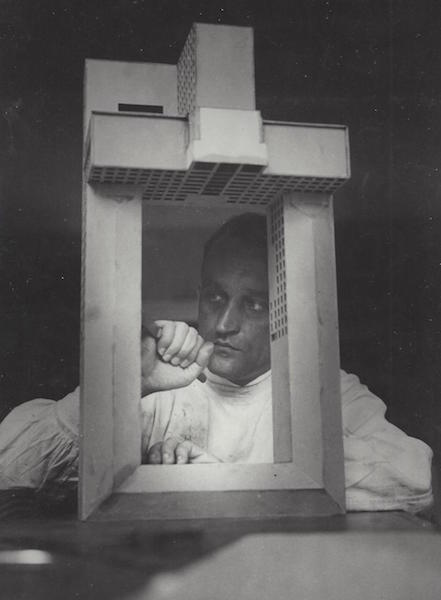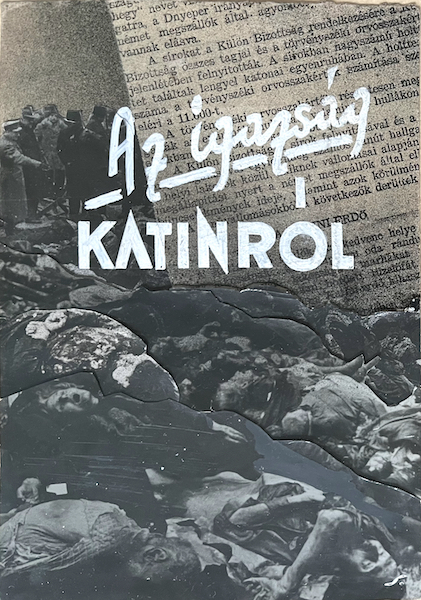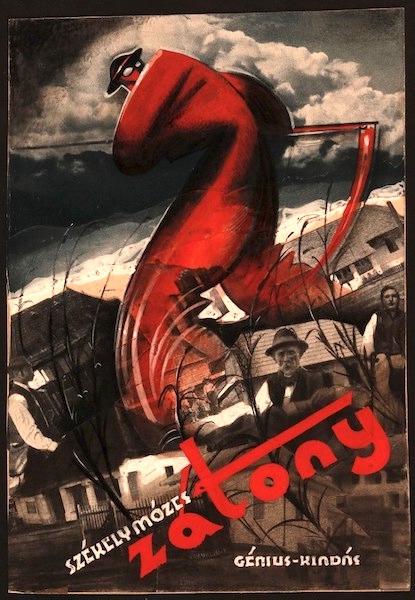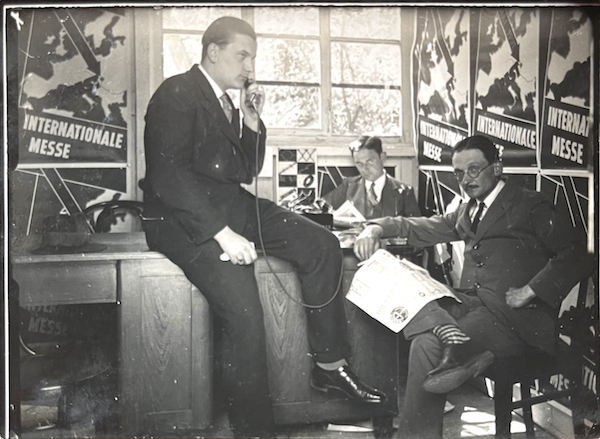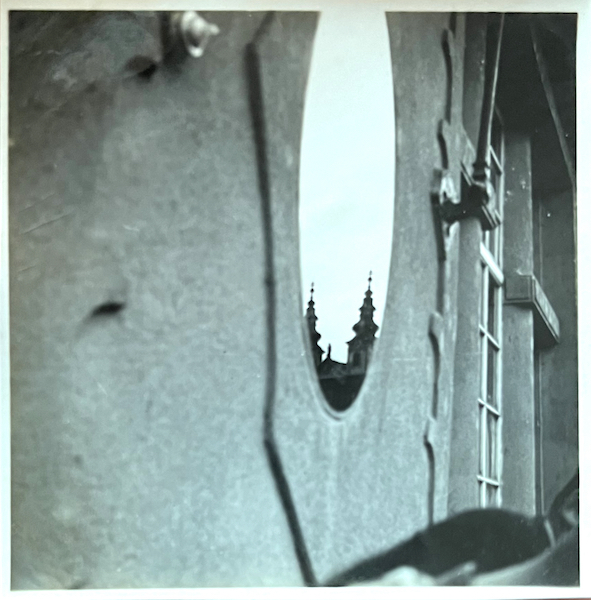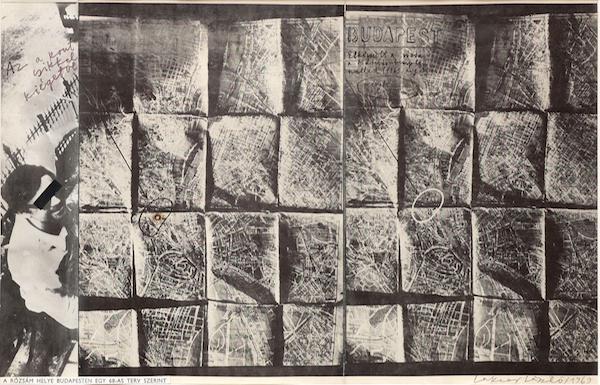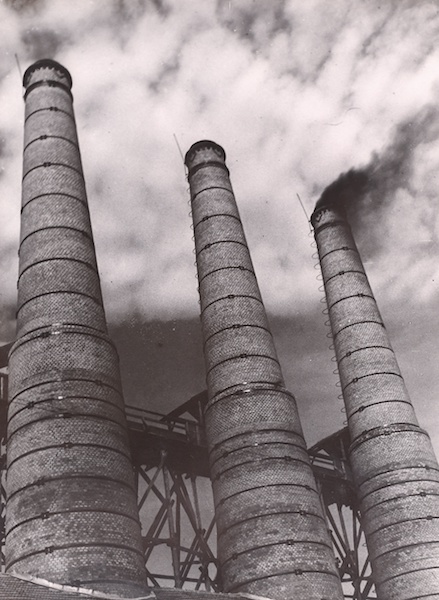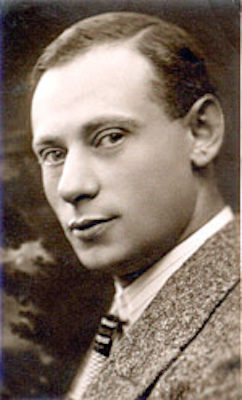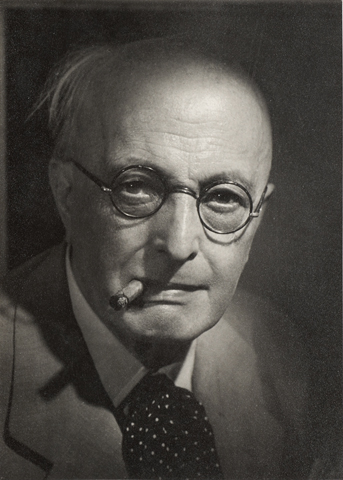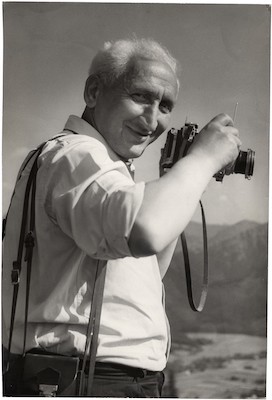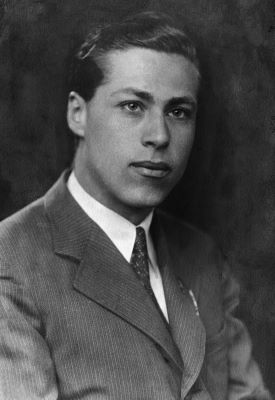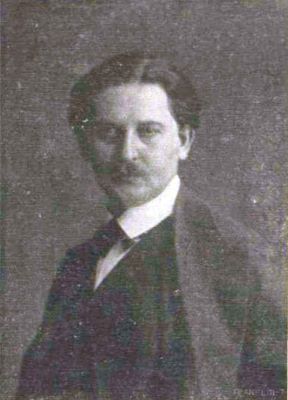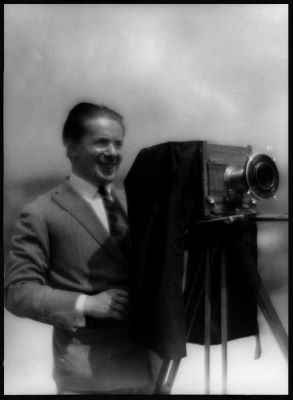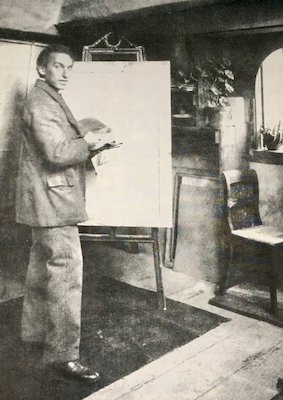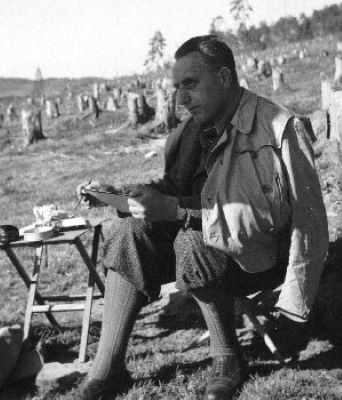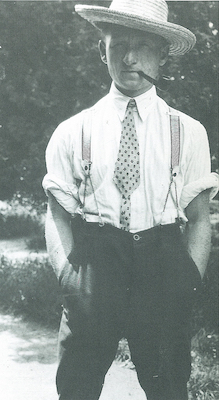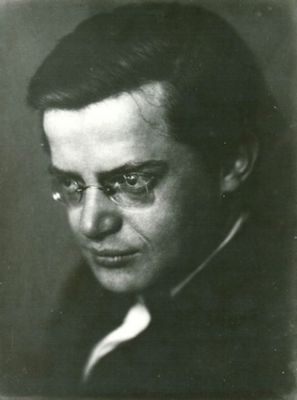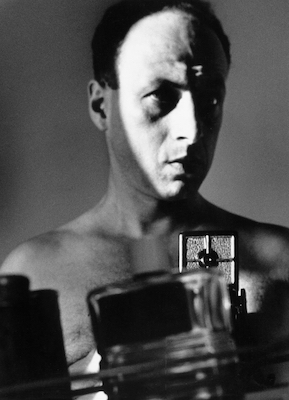Photography
(1905 - 1945)
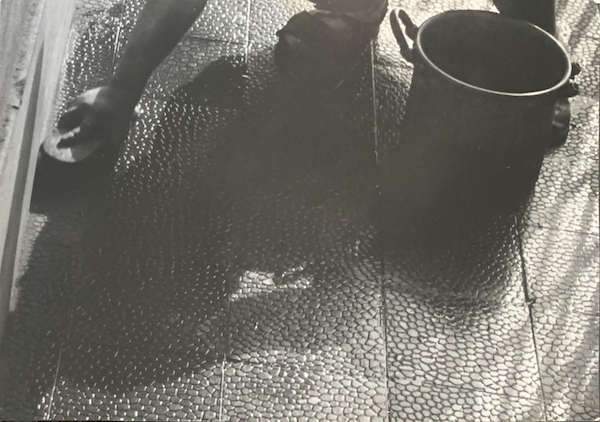
About
Modern Hungarian Photography
1) The Pictorialism
While in the United States Pictorialism was born around 1895 under the name Photo Secession, primarily in order to distance itself from the ever-growing amateur movement, in Hungary the National Association of Hungarian Amateur Photographers (MAOSZ), founded in December 1905, designated the toolset and creative language of Pictorialism as the basis of its artistic goals. This, although it moved the art of photography, which was rigid in studio templates at the end of the century, out of the deadlock and did a lot for the recognition and development of photography, by the end of the 1920s it had already become strongly outmoded. Pictorialism can also be considered the beginning of modernist efforts, in the sense that it was initially a progressive genre. Photographic methods similar to painting or graphics were preferred. Photos taken in this style are characterized by: soft contouring and light scattering, and the use of various processes. It is interesting that only in the Hungarian language labeled these development techniques (e.g. bromine oil printing, paper printing or rubber printing) with the adjective 'noble', thereby emphasizing the artistic nature of photography. But this stylistic trend, just like abroad, has produced its counter-trend(s) at home as well.
József Pécsi's career began in the 1910s. He learned the basics of the profession in Munich, where he graduated with honors and received the then highest German photography award, the Dührkoop Medal. At the age of twenty-four, he was elected one of the honorary members of the Salon of Photography in London. He had countless successes, most of which he won with his pictures made in the pictorialist style. He participated in the creation of Hungarian photographic education in 1913, from which he was removed in 1920 due to his leftist views. The most outstanding individuals of his time visited his studio, and many photographers who later became a defining figure in Hungarian photographic public life learned the craft of photography in his studio. In the course of his creative work, he also immersed himself in the art deco genre alongside František Dtrikol from Prague, but at the same time, his most significant direction was advertising photography, which he raised to an artistic level. His book Photo und Publizität, published in Germany in 1930, had a great influence on many European photographers working in this direction. He also left behind inimitable works in the field of self-portraits and nude photography, and he published the first nude folder in Hungary.
Female photographers are among the most prominent representatives of the "modern style" of the turn of the century. Ilka Révai, a great portrait photographer trained at Dührkoop, Erzsi Gaiduschek, a very popular studio photographer, Jutka Miklós, a poet who maintained a studio in Nagyvárad during the World War, and above all Olga Máté, who was a pioneer of modern portrait photography in Hungary. Her most famous works include portraits of Mihály Babits, Károly Mannheim, Béla Zalai, Juliska Láng and Margit Kaffka. The loosening of contours in her portraits and the use of the sfumat technique are very popular. The other procedure she often uses is when the "disembodied" figure can hardly stand out from the dark background, where only the face and hands expressing the person's character are emphasized by the lighting. These two processes can be paralleled with the fashionable painting methods of the time, primarily with the technical solutions of Whistler's and Eugéne Carrière's popular works. Focusing, emphasizing, compressing and omitting the face, i.e. non-natural, non-photographic representation, was not alien to the photo aesthetes of the time either. Máté Olga opened her first independent studio in Fő street in 1899, but her studio on Veres Pélné street became really famous. Through her husband, the philosopher Béla Zalai, she came into contact with progressive trends. Their apartment is occupied by like-minded people - members of the Nyugat and the Vasárnapo Kör ('Sunday circle'), e.g. It became a popular meeting place for Béla Balázs, György Lukács, Ferenczy and the Dienes family. During her work, she became interested in women's issues. Towards the end of her career, she changed her previous style and created a lasting impression in the new realist style. Her studio was most often visited by families from Budapest's wealthy middle class, chief clerks, intellectuals and artists. She has participated in numerous domestic and international exhibitions.
Ilka Révai relatively early broke through the template of familiarity, visual conditioning, and the public taste that expected a picture to be like a painting at all costs, ahead of her male contemporaries. In her few, available pictures, the photographic expression prevails. As an excellent realist portraitist, she took the human face as her lens, from a novel camera position, she photographed only the face and only the head more than once from a close camera position, which was very rare among her contemporaries.
2) The Hungarian-style
Due to the economic, social, domestic and foreign political changes after the First World War, domesticity naturally increased in the field of photography as well. For years, Hungarian photographers did not receive invitations to the previous international exhibitions, and Hungary was only able to organize it in 1927, which, however, lacked interesting names. The so-called Hungarian style appeared in Hungarian photography in the twenties and reached its peak in the thirties. Its main characteristics are the choice of folk themes, the idealistic representation, the "only the beautiful" approach, the conscious use of backlighting, various image softening methods, and the use of gelatin silver enlargements instead of 'noble' methods. Although the Hungarian style proclaims the sovereign language of photography, it is in many respects a continuation of pictorialism. In 1914, Rudolf Balogh, as the editor of Fotóművészet, formulates the program as follows: "let's look for and find subjects with which we can better assert ourselves abroad - let's create Hungarian artistic photography, with Hungarian air, clear Hungarian skies!". In 1937, one of the leaders of the movement, Béla Paulini, published a publication entitled "Gyöngyösbokréta", whose ghostly, romantic photographs reinforced the clichés about the Hungarian parastydyl. At the same time, they covered up the burning problems of the exploitation of the peasants. The use of photographs fitted into the process of national identity building and folklorization: the popular theme of the newspapers was the idealized presentation of folk life, and the conservative, national newspaper Új Idők, edited by Ferenc Herczeg, became a forum for the trend. The 'Hungarian style' was dominant in artistic photography, especially among art lovers. Before the Second World War, it enjoyed the effective support of the cultural policy of the time, almost all publication opportunities, and emerged as an official movement. Not only at the exhibitions, but also in picture magazines, domestic and foreign magazines, trade magazines, yearbooks and albums, these idyllic depictions of the country were predominant.
Rudolf Balogh not only had a decisive influence on his contemporaries, but even decades later had an influence on the outlook of many amateur and professional photographers. For a long time, his importance was narrowed down to the role he played in the Hungarian style, but this has been changed by the research of the past decades. His early pictures covered a wide range of subjects, but his interest drew him to reportage early on. From 1903 until the paper's closure in 1921, he worked as a photo illustrator for Vasárnapi Újság, where Gyula Jelfy was the leading photojournalist. He captured a large number of Budapest's beautiful details, cityscapes, and representative new buildings.His fast pace of work did not come at the expense of quality, in fact, he experimented with a number of technical innovations, such as the telephoto lens called the 'binocular lens', and he also took cityscapes with a panoramic camera. He was one of the first to make color slides for his landscape and city pictures for tourism purposes at home using the world's first usable color process, on factory-produced autochrom plates, and also sent color pictures to exhibitions. His artistic photos are in accordance with the taste of the time, so-called picturesque. they were created with 'noble processes' - pigment or rubber printing - but his critics drew attention to his winter night city and landscape scenes, genre scenes that moved away from picturesqueness, exploited the possibilities of black-and-white photographic representation, and built on intimate atmosphere and light effects. In the first three years of the war, more than 800 of his pictures appeared in Vasárnapi Újság. Later, he was assigned as a photographer accompanying Archduke József and Emperor William. In recognition of his work as a war correspondent, he was awarded several times. After the First World War, he joined the leading liberal-minded press concern of the era, becoming an internal employee of Est Lapok. Later, he became the leading reporter of the journal, Pesti Napló's Vasárnapi Képes Melléklete, which started in 1925. In the 1930s, a change took place in Hungarian artistic photography, as well as in the work of amateurs. Compared to the previous era, the gradual separation from picturesqueness and the development of the photographic vision represented a significant advance. The expression of the photo, unique to him - the plastic representation with light, the richness of detail, the sharp drawing, the depth of field - became a general requirement. Rudolf Balogh was at the head of this movement. Not only did he make his contemporaries aware of the independent subject matter and forms of expression of photography with his works, but from 1930 to 1936, until the paper ceased to exist, he was one of the directors of the photographic public life as the responsible editor and publisher of Fotoművészeti Hírek, one of the most important forums of 'Hungarian style'. Rudolf Balogh initiated the artistic representation of the Hungarian folk ethnicity, the village, primarily the Great Plains, the life of the Hungarian plains, folk types, the landscape, and the animal world. His favorite subject was the folk genre, in addition to landscapes floating in brilliant light, ruffled with sheep clouds (sometimes replacing the clouds with a montage) and bravura depictions of animals. In his portraits of folk subjects, he mostly depicted only the cheerful, idyllic side and festive moments of the holidays and everyday life in the village. We never see the tiring work, the difficult human fates. In contrast to his World War reports, there is no sign of poverty or trouble, but instead he showed his figures in the middle of small everyday events, in the household, doing chores around the house, engaged in handicraft work, or celebrating, mostly in rich folk costumes. From the middle of the 1930s, as the head of the laboratory of MTI's predecessor, the Hungarian Film Office, he took on an increased role in tourist information for foreign countries, creating an idyllic image of the country for foreign countries. in forming a positive image. In 1936, National Geographic illustrated an article about Hungary with Balogh's color and black-and-white pictures. The Second World War destroyed a large part of Balogh's oeuvre, like so many excellent Hungarian photographers. In June 1944, his apartment and studio were hit by a bomb, which completely broke him mentally, his health declined rapidly, and he died a few months later. Only 34 years later did it become clear that his relatives had managed to get most of his pictures, especially his glass negative plates, out of the ruins. Only 34 years later did it become clear that his relatives had managed to get most of his pictures, especially his glass negative plates, out of the ruins. In 1960, a commemorative exhibition was organized in the Petőfi Literary Museum of the fragments of his work that were known until then. It was only in 1978 that his reportage photo legacy, consisting of thousands of negative plates and positive copies, including about 1,500 World War shots, which had been lying dormant until then in the Hungarian Photographic Museum, was transferred from his adopted daughter to the Photographic Collection of the Association of Hungarian Photographers, which gave way to a more complex evaluation of Balogh's work. In his most lasting pictures, Balogh captured the beauty of the lowland-desert landscape, the flat countryside, the infinity of the large open spaces, and the impressive atmosphere. he applied the most up-to-date solutions in technique and image editing, handled the photo's most important image-forming tool, light, brilliantly, but he did not use his superior craftsmanship for self-serving form games, he avoided all impropriety, contingency, and randomness. The main virtue of his pictures is harmony, he strove for conciseness, classical order and balance in his compositions and editing methods, and he molded his varied subject matter with great confidence. He masterfully balanced tense contrasts, at other times the keynote of his pictures is quiet contemplation and cheerful joy of life. He achieved a classic balance of movement and calmness, a wise moderation. His works, full of striking insights, lyricism, and a sense of humor, are among the lasting values of Hungarian photography.
Ernő Vadas started his artistic and photographic career as a student of Rudolf Balogh. After his first successes, in 1928 he joined the amateurs' organization, MAOSZ. He was one of the main organizers of the MAOSZ, a permanent jury member of photo contests, the founder of the Modern Hungarian Photographers Society with Imré Kinszki and Gusztáv Seiden, and the main organizer of the Daguerre centenary exhibition. With his 1931 picture Swans, he won the first prize of one thousand gold francs in the Swiss Camera competition. In 1939, together with Károly Rosner, he published Magyar Fényképezés ('Hungarian Photography'), the first comprehensive album of the era's photography, in which he was not only an editor, but also an author. Vadas was not spared by the arrowy rule of the 40s either. In 1944 he was taken to labor service and returned from Mauthausen and then Günskirchen at the end of 1945 (without his friend Imre Kinszki). After the nationalization, he joined the Hungarian Photo State Company and thus became a professional photojournalist. He was member of FOTO's editorial board, head of MÚOSZ's photojournalist department. From 1958, he continued Rosner's 1939 publication in four books under the same title. In 1960, he presented his photographs at a lifetime exhibition in the Szinyei-Merse Hall.
István Kerny was an amateur photographer. He started taking photographs when he was 14 years old, and he made his first camera himself. During his almost 70 years of work, he not only cultivated almost all branches of photography, but also published more than 40 articles and studies. However, the most exciting part is its role in the development of the Hungarian style. He not only looked for the new in the choice of topics, but also tried to learn the most diverse technical procedures. He believed that perfect and varied technical procedures are also important in artistic photography, because they can enhance the effect of the image.
F. G. Haller's life path, like that of so many other photo amateurs in the period between the two world wars, is a mixture of clerical work and artistic work. His civilian occupation was an engineer. According to some recollections, he earned his living as the chief engineer of the Hungarian Radiator Factory until nationalization, and according to other sources, as the chief official of the Láng Gépgyár, and meanwhile his artistic ambitions led him on a straight path to photography. In 1932, he became the secretary of MAOSZ, and in 1934-35, the club's treasurer. From 1939, he was the secretary of EMAOSZ, the organizer of courses and vocational education. In the 1930s, he also took a significant part in the public life of amateur photography with his professional literary activities. In 1936, he became the editor-in-chief of Fotoművészeti Hírek, and two years later, he regularly published exhibition reviews in Fotószemle, published a series in Tükör for those familiar with the basics of photography, and was a regular columnist for the German Die Galerie. After 1945, he reorganized the largest Hungarian photography association, the Budapest Photo Club. The most significant part of his oeuvre is made up of photos taken during his travels in Transylvania and Italy, as well as genre pictures taken from folk life.
3) The Social Photography
Modern Hungarian social photography was born as the antithesis of the Hungarian style. Only the political changes following the First World War served as a breeding ground for more mobilizing social photography. From the point of view of the development of sociophoto, it had a fundamental importance that the most important sociophotographers of the twenties and thirties were close to some political movement, which fundamentally influenced their perception. In this context, two political groups were significant, one was the Sarló movement in Bratislava, which started in 1928, and the other was the sociophotographers organized around Lajos Kassák and his magazine, "Munka" from 1930. In the spirit of communist ideology, the former group used photography as a weapon in the class struggle, and primarily immortalized poverty and misery in order to stigmatize social injustices. The danger lay in this that their pictures were sometimes a little schematic, only becoming photos of poverty aiming for a shock effect. The Kassák circle, on the other hand, took a more moderate position, since Kassák protested against all kinds of thematic restrictions. He encouraged many practicing labor photographers to rediscover the world from a socialist perspective.
The increasingly militant attitude of the sociophotographers - in contrast to the early sociophoto - went hand in hand with increasingly complex and effective formal execution, which was greatly influenced by the German Bauhaus photography, above all the influence of László Moholy-Nagy on the Hungarian sociophoto. The German impulses were conveyed on the one hand by photographers such as Éva Besnyő, who was active in both countries, and on the other hand by the writings of contemporary Hungarian photo theorists. These included Árpád Szélpál, the poet and publicist, who was himself a prolific social photographer, Kálmán Brogyányi, a member of the Sarló movement, Iván Hevesy, Hungary's most significant photo esthete at that time, and Lajos Kassák. They all explored the possibilities of political photomontage, as John Heartfield had done in Germany, and promoted it as an adequate form of expression for committed and class-fighting sociophoto. At the beginning of the 1930s, the Munka-circle came to the public with several exhibitions, and in 1932, it published the first Hungarian social photography book entitled "Our Life". The critics of the time praised the strict objectivity and clear composition of the images, and above all their photographic power. The photos of the Kassák circle showed not only aesthetic sophistication, but also the intention of the "new way of seeing" advocated by Moholy-Nagy, which Kassák referred to when he saw the new socialist worldview in the formally unusual, aesthetically demanding compositions of his fellow photographers. At this stage of the sociophoto's development, Kassák came to the important conclusion that the impact and political mission of the sociophoto mainly depends on its formal execution.
Some important artists, such as Kata Sugár, Kata Kálmán and Klára Langer, worked in an approach related to the Munka photo circle - but organizationally independent of them. Stylistically and content-wise, they were close to the left-wing movements, and from their prominent peasant heads brought to the fore or from their "visions" avoiding all kinds of idylls, the same atmosphere seeking renewal emerges, as we know from the works of the Hungarian village researchers and folk writers of the time. Of course, their work remained isolated for a long time, Kata Sugár's dramatic works, for example, only received publicity after 1945, and Kata Kálmán was able to publish her recordings in two volumes thanks to the Cserépfalvi Kiadó (Tiborc, 1937, which was one of the most effective period documents for left-wing intellectuals, and Szemtől szemben, 1939). The activities of these three artists now seem more serious than the role of the Munka photo circle — primarily because they created a more aesthetically demanding and unified oeuvre. The social backwardness of Hungary in the 1930s looks at us with the most dramatic force from the photos of Kata Sugár, the archaic hardness and desperation of the faces are ennobled into a type floating above the personality in these pictures. Kata Kálmán's images are cooler, more descriptive, and as a distant analogy they remind us of the realism of Roman portraits. According to critics of the time, the recordings revealed the human depths of the peasant's fate. The shots of German photographers Helmar Lerski and Erna Lendvai-Dirksen were the prototypes of the socio-portraits of Kata Kálmán, whose work was popularized by photo historian Iván Hevesy, Kata Kálmán's husband. In Klára Langer's photos, on the other hand, activity and a restless character dominate. One of Langer's memorable series of pictures mapped the most delicate subject, the life of the gypsies, even from poverty. The sociophoto movement reached the highest point of its development with these series of images, here you can recognize not only the qualities of commitment and stylistic rigor, but also the character of a personal artistic vision.
Károly Escher, the most significant Hungarian figure in Hungarian realist reportage photography, began his work in the 1930s. His photos are characterized by a keen eye, caustic irony, and sometimes a bizarreness and depth of thought that evoke the shocking associations of surrealism. He fused Dadaist montage technique, avant-garde photo experiments and the leftism of Hungarian social photography with supreme talent in the reportage-like images that preserved the reality of the photo, but did not lose the boldness of the imaginative experiments either. One or another picture — e.g. the juxtaposition of mounted policemen and street garbage collectors, the outdoor furniture of the evicted, or his shots composed of the swirling of sausages, stage scenes — exude the atmosphere of the great films of the era and the blood-filled images of Eisenstein and the moving burlesques. Escher was actually a representative of the same concept that the universal photographic art of the 1930s represented in the works of the Magnum circle. Unheard-of mobility and left-wing inspired critical realism permeated the works of Magnum's founders — Cartier-Bresson and Robert Capa — and Károly Escher worked on a similar critical realism at the same time as them, but instead of world news, with the more modest Hungarian opportunities. His activity extends into the latest era — he worked until his death in 1966.
4) Neue Sachlichkeit (New Objectivity)
The movement of the new objectivity (Neue Sachlichkeit) was also a reaction to all kinds of photographic forgery, picturesqueness, romantic and sentimental subject matter, noble procedures, portrait flattery. The art of photography turned again - albeit in a more advanced way - to objectivity. It restored the value of the reality of the material world, realized the complete freedom of representation of reality. It only strove to reproduce visual experiences, on which pure photography could prevail, without any novelistic elements. thus, not only the idealized representation, idyllic, anecdotal or poetic content that is common in painting disappeared from "Sachlich" pictures, but they also tried to keep emotional elements away. Therefore, in particular, dead objects, things created and shaped by man came to play a major role in the subject of photography . This abolished the ranking of artistic subjects that had been respected for several centuries. The subject area of photography expanded enormously by elevating even the most ordinary sights to the rank of artistic representation. The plasticity of forms, the materiality of the surface, highlighting the essential details played a major role in the representation of the new objectivity. lighting. The objectivists strove for a realistic, almost scientifically exact, as realistic representation of the details as possible, they created unblemished pictures. They liked the close-up of the camera, showing a relatively small detail of the subject on a large scale.
The transformation of József Pécsi's creative language from a picturesque vision to affinities with avant-garde trends, to a certain degree of adaptation of the new objectivity, the Bauhaus approach. Pécs maintained intimate friendships with the great personalities of domestic art, music, literature, and theater. He was not only a fan of old and new painting, but also an expert and enthusiastic supporter of the revolutionary fine art endeavors of his time. His artistic approach met the avant-garde experiments of young visual artists starting at the time. With his exceptional knowledge of people, he not only photographed the progressive young artists - Anna Margit, Imré Ámos, Béla Bartók, Aurél Bernáth, Miklós Borsos, József Egry, Bénit Ferenczy, Lajos Gulácsy, Lajos Kassák, György Kepes, Dezső Kosztolányi, Ödön Lehner, Ödön Márffy, Pál Pátzay, Győző Vásárhelyi, Tibor Vilt - but his outlook and art were shaped similarly to them. He made memorable portraits of the excellences of the art life abroad - including Pablo Casals, Graham Greene, Nizhinsky, Anna Pavlova, Svyatoslav Richter. His style gradually changed during the 1930s. His portraits usually show a certain stylization intention, primarily he tried to create a fantasy reshaping of the experience and a pictorial unity of the shot. Instead of showing the superficial resemblance and external features, he strove for a more in-depth characterization of the model and a concise expression of complex individualities. He always created the situation and pictorial world through which not only the character and inner essence of the depicted person is expressed, but also associates the viewer with the field of activity of the presented - mostly intellectual creator - and its character. Asymmetric editing, bold cuts, vibrant, unrealistic light-shadow effects, stylized momentaryness or emphasizing the geometric order of shapes are all part of his characteristic toolkit. His research interest was also regularly focused on himself, and we can follow certain phases of his development in the most visual way through his interesting series of self-portraits. From the end of the twenties, the genre of still life came to the forefront of his art, and he dealt with advertising photography in a series of articles. His still lifes, composed with great taste, are generously simple. They are characterized by an objective approach, material accuracy, logical grouping, and constructive editing. As in his portraits and nude shots, the process of change in his formal language can also be easily followed in his advertising still lifes. More and more often, he used the black and white shiny bromine silver copy, on which he sometimes highlighted the subject of the advertisement with brown coloring. The advertising still lifes of his mature period are based on the aesthetics of the most ordinary objects - fish, plates, cutlery, onions, shoes, cameras - he strove for the beauty of material representation and the harmonious arrangement of forms, which he mostly achieved with a clear overview.
Born into a Jewish family in 1901, Imre Kinszki's work in philosophy, natural science, literature and information dissemination is also significant in addition to his photography. In the beginning, he photographed his children, his family, his surroundings, and his narrower homeland, Zugló. His innovation does not lie in his choice of subject matter, but rather in his specific formal language with a new approach, the way he composed his object photos, street and life pictures, the way he handled light-shadow relationships, with particular regard to the innovative and form-breaking "top view" optics. His biographies are sensitive reports about urban life in the thirties. The foreign literature gives high marks to his art, mentioning his oeuvre together with Brassaï, André Kertés and László Moholy-Nagy. In addition to capturing family memories, his interest turned to artistic photography. In 1930, he designed a machine called Kinszekta that was able to take microscopic images with a natural science magnifier. In 1931, he became a member of the MAOSZ. From the beginning of the 1930s, his photographs and articles related to photo-technical and nature photography were published in the trade press. He was a regular contributor to Nyugat, Századunk, Vasárnapi Újság, Búvár, and occasionally published in American Photography, National Geographic, Studio and Popular Photography. In 1934, in his article published in Fotoművészeti Hírek under the title "The shadow of the past", he attacked the traditional values - also represented by the MAOSZ - and sided with the "new photography" which was close to the "Neue Sachlichkeit". He was called up for labor service in 1943, and in November 1944 he sent his last postcard to his family from Ferencváros railway station. Imré Kinszki was last seen in January 1945 in a Hungarian labor service company marching towards the Sachsenhausen concentration camp. He was looking for the beauty he found in nature and recorded it with the help of a camera, whether it came from lights and reflections or even a compositional solution. What he could not deal with as a scientist was now the focus of his attention again. His botanical interest turned him towards plants and animals. Kinski was interested in discovering the world and organizing it into a specific, aesthetic order, in the manner typical of truly dedicated amateurs. Through the machine, he could focus on this order with full intensity. His family recordings, pictures taken during vacations, and photographs taken on and from the streets of Pest and around the city are not only formal experiments, but interesting and often important documents of the era.
Jenő Dulovits is one of the most significant and defining creators in the history of Hungarian photography and photo technology, who, treating aesthetics and technique as a unity, developed a distinctively individual photography style based on backlighting, softening and light-shadow balancing. As a photographer, he made a lasting impression primarily in the genre of urban photography and still life. With his aesthetic views expressed in his books, his experimental negative-positive technical process that results in the richest tonal drawing, his Duto prime lens that gives a soft drawing, and his world of impeccably edited, timelessly beautiful images, especially with contrast lighting and bright highlights, he has influenced a wide range of Hungarian amateur photographers working with artistic ambition for decades. With his solutions imitated by many, he was one of the leading personalities of the 'Hungarian style'. Decades after his death, collectors and writers of various nationalities are still interested in his technical innovations, especially his top-quality camera, the Duflex, which he developed with his colleagues. Dulovits often photographed folk genre pictures in the villages around Budapest, mainly in Csömör, but unlike the practitioners of the 'Hungarian style' he criticized, he captured the everyday, the small events of life. He did not change the clothes of his characters. Between 1931 and 1958, he patented 13 of his inventions, 11 of which were related to photographic technology. Four inventions have been patented in France, the United States and Germany. Dulovits was committed to soft-touch photography from an early age. Dulovits was committed to soft-touch photography from an early age. His most successful invention, patented in 1931 - which spread widely abroad in a short time - but also the most controversial, was his softening front lens, on which he ground concentric circles into the glass disk. By dissolving and softening the sharp drawing of the photograph, it gives a halo-like contour with blurred edges, which removes the small, disturbing details, makes the image calmer and more composed, and enhances the sparkle of the light. Dulovits's book (Artistic Photography) and pictures played a significant role in spreading the modern photographic style, which is opposed to picturesqueness, and the incredibly demanding, modern method of creation in terms of technique and image editing. In his pictures, he depicted beauty in the most varied subjects, in a bravura presentation, with the highest technique, confident composition, harmonious distribution of tones, varied use of light effects, and a striking capture of movement. He liked to photograph Budapest skylines in color and black and white, often at night, with roads shining in rainy weather, as well as Balaton landscapes and snowy regions, which were regularly published in Hungária Magazin.
Hungarian photographers abroad
In Hungary in the 1910s, there were no professional educational institutions where those who wanted to could study photography. Those who could afford it, went to Vienna, Munich or Berlin. After World War I, many people went abroad for financial reasons, others migrated due to political pressure or professional considerations. The difference compared to previous waves of emigration was that this time many people never returned to Hungary. László Moholy-Nagy, László Czigány, Zoltán Glass, János Reismann left for Germany, Gitta Carell went to Italy, György Kepes and Stefan Lorant made their careers in England. After the National Socialists took power, dozens of Hungarian photographers gathered in Paris: André Kertész, Rogi André, Brassai, Robert Capa, Andor Dienes, Ferenc Kollár, Ergy Landau, Nóra Koffer Kamilla Kelenföldi Telkes. Living abroad as a photographer was easier than at home, since you could get good money for the pictures, and you could send your work anywhere, and photography was a respected profession.
Few countries can be said to have given the world so many first-class photographers, but perhaps even fewer countries have been unable to retain any of them. The opinions of specialists are divided about the role Hungarian photographers who emigrated abroad play in the history of Hungarian photography. Writings about the era usually discuss them in a separate chapter, but do not talk about the effects. The Hungarian public knew almost nothing about the work of Kertész, Capa, Brassaï or Munkácsi until the 1960s and 70s; Fortunately, that has changed today.
Artworks in this theme
related artists
Imre Kinszki
(1901 - 1945)
Zoltán Kluger
(1896-1977)
István Kerny
(1879-1963)
Ernő Vadas
(1899 - 1962)
Károly Escher
(1890 -1966)
István Szendrő
((1908-2000))
Rudolf Balogh
(1879 - 1944)
Angelo
(1894 - 1974)
Ervin Bossányi
(1891 - 1975)
András Csiky
(1894 - 1971)
László Moholy-Nagy
(1895 - 1946)
Sándor Trauner
(1906 - 1993)
Iván Hevesy
(1893 - 1966)
Lucien Hervé
(1910-2007)

